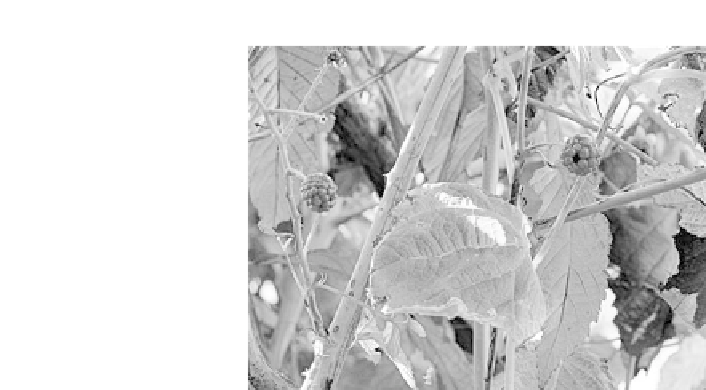Agriculture Reference
In-Depth Information
Figure
6.3.
Blackberry growing in A´da and Zorro's garden.
sorbet. Both are squeezed to extract their juices, which are used as a beverage at
meals or for snacks.
No nuts are grown on any of these farms. All three families, however, do eat
peanuts as snacks.
6.2
INTRODUCTION
In this chapter the terms fruits, berries, and nuts are applied as commonly used even if
scientifically they might be classified otherwise. For example, some fruit might not be
classified as fruit, some berries might be fruits, and some nuts could be, in some cases,
considered fruits. Also, to make it easier to follow the development of this chapter,
edible portions of plants that are commonly called fruits or tree fruits will be discussed
under these terms even if, as in the case of papaya, they do not technically grow on a
tree. In a similar fashion, berries come from both low-growing bushes, brambles, and
other types of plants. Coconut, which is neither a tree nor nut, and peanuts, which are
also not nuts and grow on annual plants, will be discussed separately in Sections 6.9
and 6.11.
Fruits, berries, and nuts grow in isolated patches, or individual trees, as wild plants,
and in orchards, farms, or plantations. This is true for most of the world and is unique to
these sources of food as opposed to tubers, vegetables, and grains, which are, with few
exceptions, planted and harvested in definite gardens or fields. Blueberries, shown in
Figure 6.4, and walnuts would be good examples of wild or semiwild growth of
common berries and nuts.
Because these sources of food can be found wild, untended or unclaimed, they can
make a substantial addition to the diets of subsistence farmers and others living at a sub-
sistence level. In addition many of these food sources are relatively inexpensive
especially those fruits and berries that do not ship well.








